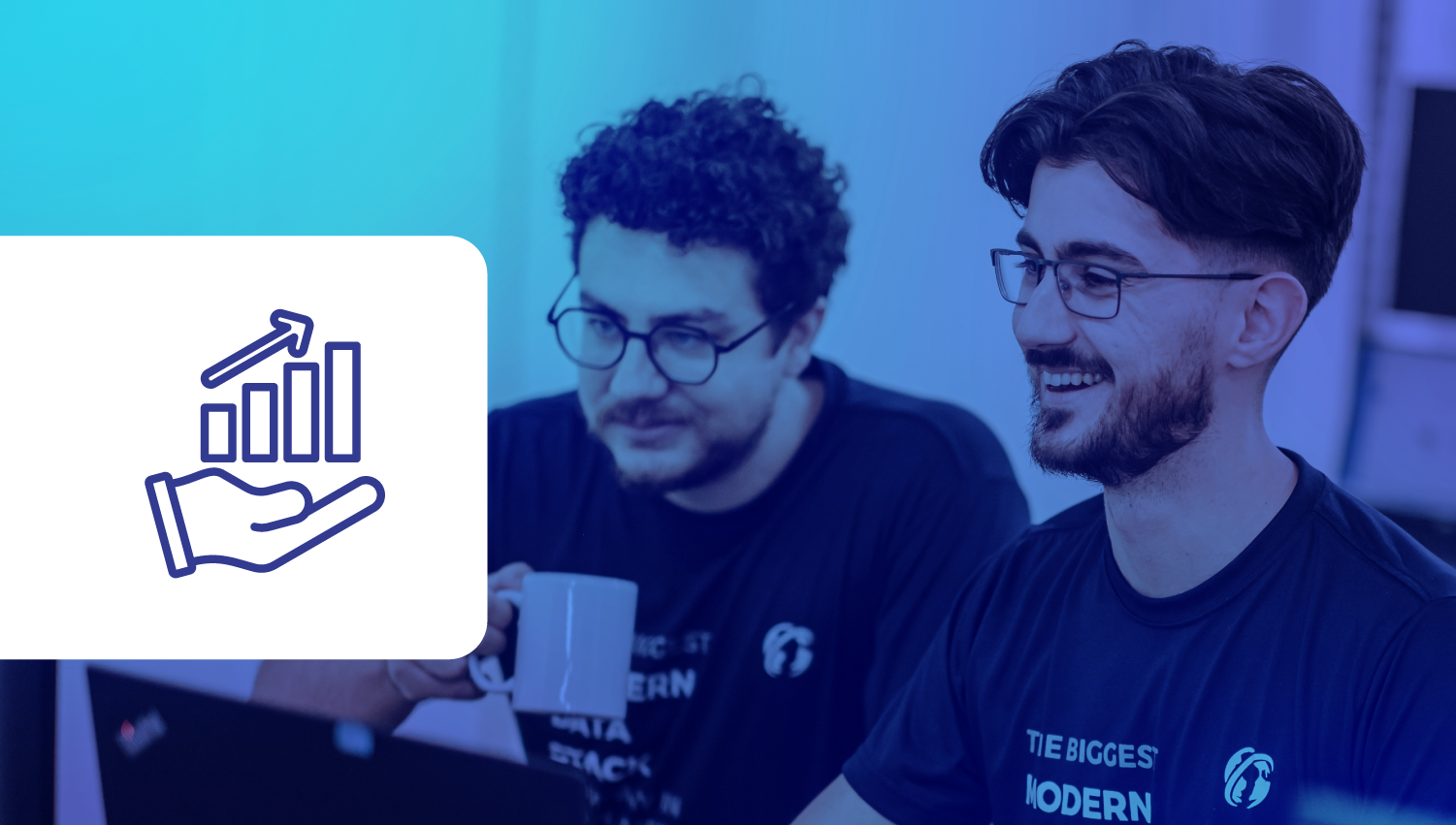.png)
5 lessons from Uber, Engie and Indicium on data-driven business
It's a fact that we can learn a lot from big companies about the use of data in the decision-making process.
In this text, you will see 5 fundamental lessons that Uber, Engie and Indicium taught in the Data for Strategic Decisions Webinar, which took place in June 2021.
It was an amazing chat with powerful insights into the perspectives of using data in decisions. And this post brings the view of those who use analytical intelligence in practice.
Lesson 1: Born digital has a head start in the analytics race
It is undeniable, companies that are born digital have a significant analytical advantage over traditional companies. This is because they do not have to face the challenges of digitalization, nor do they have to face the numerous technological and cultural barriers of this transition.
However, that's not to say that traditional organizations can't adapt to the analytics transition.
Engie, for example, was born analog, but has a consolidated global strategy on the path to digitalization that involves actions ranging from the construction of databases in the cloud to the analysis and relationship of this data to expand the possibilities of use in strategic decision-making.
The transition is not fast, it involves costs and efforts, but it can and should be done!
Lesson 2: The Data-Driven Journey Is Not the Same for Everyone
The same company may be at different stages of analytical maturity and this is absolutely normal.
In the case of a company that was not born digital, it is likely that different departments are at different stages of the Data Driven Journey.

Engie, for example, is capable of generating complex analyses that require high analytical maturity, such as modeling for energy price forecasting and customer clustering.
However, it also encounters challenges present in stages 1 and 2 of the Data Driven Journey, such as the need to structure data processes and update legacy systems.
Still, with advances in digitization and sophistication of its data structure, these difficulties tend to diminish and the company to position itself at the forefront of the data-driven revolution.
At the same time, the challenges of companies that are born digital are different. At certain times, not even moving forward in the Data Driven Journey can be a strategic decision.
The creation of predictive and prescriptive models (steps 5 and 6) requires high investments and requires a skilled workforce of expensive and scarce professionals in the market.
With this in mind, Uber, which navigates between the most advanced stages of the roadmap, uses metrics to evaluate and predict the return on investment of a given model before applying it to its operation.
Thus, the company uses its analytical maturity to evaluate and optimize processes, avoiding unnecessary costs with labor applied to initiatives that do not make sense for the operation.
Knowing when and how to apply intelligence instead of using it all the time, that's being data driven!
Lesson 3: Being data-driven is a never-ending process
It is a mistake to think that the Data Driven Journey has an end. In fact, the analytics advantage is born precisely when a company learns to apply data intelligence to:
testvalidate hypothesesadjust errorsexperiment and measure actionsAnd all in a practical, fast and real-time way.
Therefore, being data-driven is a process based on interaction and analytical experimentation.
Its magic lies precisely in the use of metrics to measure the performance of new solutions, understand problems and improve performance.
Also, being data driven is:
Consider the customer's experience and perspective. Monitor their engagement. Adjust strategies where necessary.
Lesson 4: Data-driven without borders
The position of a company or country in the data-driven revolution is much more linked to the era in which the company was created, its culture and area of operation, than to its geographic location.

Thus, it can be said that companies of different sizes, located in different regions, experience similar challenges in terms of data use, including:
- barriers related to organizational culture.
- lack of manpower and technology.
#Lição 5: Data-driven culture is part of organizational culture
Uber is at the forefront of analytics, and its culture directly contributes to it.
In general, people only engage in a cause when they are fully aware of its importance (and that's what happens at Uber).
The company, which was born digital, has a very strong analytical culture. There is a real awareness of the importance of a data-driven look in everyday life. Employees not only have an analytical profile, but also understand how metrics are fundamental in every decision-making in their day-to-day.
That makes all the difference.
Therefore, being data-driven is not a simple project, it is part of the culture. It's a thought that should be ingrained in the DNA of companies that want to evolve in the data revolution.
Did you like the teachings?
Learn even more on our blog. Click here to access it.

Isabela Blasi
CBDO and co-founder at Indicium




